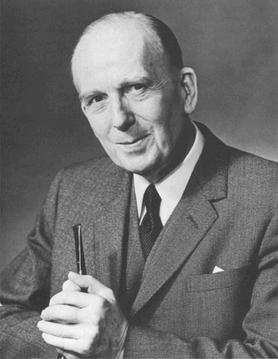
Royal Ordnance Factory (ROF) Bridgwater was a factory between the villages of Puriton and Woolavington in the Sedgemoor district of Somerset, England that produced high explosives for munitions. It was slightly above sea level, between the 5-and-10-metre contour lines on Ordnance Survey maps. BAE Systems closed it when decommissioning was completed in July 2008.
Blue Peacock, renamed from Blue Bunny and originally Brown Bunny, was a British tactical nuclear weapon project in the 1950s.

Porton Down is a science and defence technology campus in Wiltshire, England, just north-east of the village of Porton, near Salisbury. It is home to two British government facilities: a site of the Ministry of Defence's Defence Science and Technology Laboratory – known for over 100 years as one of the UK's most secretive and controversial military research facilities, occupying 7,000 acres (2,800 ha) – and a site of the UK Health Security Agency. Since 2018, part of the campus has housed Porton Science Park, which is owned and operated by Wiltshire Council and has private sector companies in the health, life science and defence and security sectors.
The Defence Research Establishments were a number of separate UK Ministry of Defence Research Establishments, dating back to World War II, World War I, or even earlier. Each establishment had its own head; known as the Director or the Superintendent. Prior to the formation of the Ministry of Defence each of the three Services, i.e. the Royal Air Force, the Admiralty and the War Office, had their own research establishments; although some establishments had tri-service functions.
The Defence Evaluation and Research Agency (DERA) was a part of the UK Ministry of Defence (MoD) between 1995 and 2 July 2001. At the time it was the United Kingdom's largest science and technology organisation. It was regarded by its official history as 'a jewel in the crown' of both government and industry.
Halstead is a village and civil parish in the Sevenoaks District of Kent, England. It is located 4.7 miles south east of Orpington & 6.1 miles north west of Sevenoaks, adjacent to the Kent border with Greater London. The population of the civil parish at the 2011 census was 1,607.
Hunting Aircraft was a British aircraft manufacturer that produced light training aircraft and the initial design that would evolve into the BAC 1-11 jet airliner. Founded as Percival Aircraft Company in 1933, the company later moved to Luton, UK. It was eventually taken over by the British Aircraft Corporation (BAC) in 1960.
The Defence Research Agency (DRA) was an executive agency of the UK Ministry of Defence (MOD) from April 1991 until April 1995. At the time, the DRA was Britain's largest science and technology organisation. In April 1995, the DRA was combined with five other MOD establishments to form the Defence Evaluation and Research Agency.

The Ministry of Supply (MoS) was a department of the UK government formed on 1 August 1939 by the Ministry of Supply Act 1939 to co-ordinate the supply of equipment to all three British armed forces, headed by the Minister of Supply. A separate ministry, however, was responsible for aircraft production, and the Admiralty retained responsibilities for supplying the Royal Navy. During the war years the MoS was based at Shell Mex House in The Strand, London.

Royal Ordnance Factories (ROFs) were munitions factories run by the UK government during and after the Second World War. The three main types of factories were engineering, filling and explosives, and these were dispersed across the country for security reasons. ROFs were the responsibility of the Ministry of Supply and later the Ministry of Defence until privatisation in 1987.

The Defence Science and Technology Laboratory (Dstl) is an executive agency of the Ministry of Defence of the United Kingdom. Its stated purpose is "to maximise the impact of science and technology for the defence and security of the UK". The agency is headed by Paul Hollinshead as its chief executive, with the board being chaired by Adrian Belton. Ministerial responsibility lies with the Minister for Defence Procurement.
Aberporth Airport is situated southwest of Aberporth, Ceredigion, Wales. The airport is being developed as West Wales Airport for domestic flights. It is also developing as a centre for the deployment of civil and military unmanned aerial vehicles (UAVs), known as 'drones'. The airport underwent major improvements in 2008 which extended the length of the runway from 945 to 1,257 m.

A Z Battery was a short range anti-aircraft weapon system, launching 3 in (76 mm) diameter rockets from ground-based single and multiple launchers, for the air defence of Great Britain in the Second World War. The rocket motors were later adapted with a new warhead for air-to-ground use as the RP-3.
The Military Vehicles and Engineering Establishment (MVEE) was a British defence research unit on Chobham Lane, Chertsey in Surrey. It was responsible for many innovations in armoured vehicle design, including ceramic Chobham armour.

Sidney Christopher Alford OBE was an inventor, explosives engineer and a doctor of chemistry. Dr Alford was the Chairman of Alford Technologies Limited, a world-leading provider of explosive engineering and explosive charge technology, that he founded in 1985. In 2015 he was awarded the OBE in Her Majesty the Queen's Birthday Honours for services to explosive ordnance disposal.
Francis Harry "Frank" Panton, was a British military scientist, bomb disposal expert, and amateur archaeologist who played a key role in the development of the Chevaline nuclear weapons system during the Cold War. He served as the Assistant Chief Nuclear Science Advisor (ACSAN) to the British government, and was also heavily involved in military intelligence work in Berlin and Washington, DC. Later, as the chairman of the Canterbury Archaeological Trust, he oversaw the discovery and preservation of numerous important archaeological artifacts in his home county of Kent.

High Explosive Research (HER) was the British project to develop atomic bombs independently after the Second World War. This decision was taken by a cabinet sub-committee on 8 January 1947, in response to apprehension of an American return to isolationism, fears that Britain might lose its great power status, and the actions by the United States to withdraw unilaterally from sharing of nuclear technology under the 1943 Quebec Agreement. The decision was publicly announced in the House of Commons on 12 May 1948.

Sir William Richard Joseph Cook, was a British civil servant and mathematician.

Wallace John Challens, was a British scientist and civil servant. A graduate of University College, Nottingham, he began working at the Royal Arsenal in Woolwich in 1936. In 1939, he was transferred to the rocket department. After the defeat of Germany, he was sent to the United States as part of the British Scientific Mission to work on the V-1 flying bomb and the V-2 rocket. On returning to the United Kingdom in 1947, he was recruited by William Penney for the British atomic bomb project. He led the team that developed the firing circuits for the bomb used in Operation Hurricane, the first British nuclear test. He later developed a neutron generator. He took part in most of the British nuclear tests at Maralinga, and was the scientific director of the Operation Grapple tests in 1957. He subsequently became the AWRE's Assistant Director in 1965, Deputy Director in 1972, and Director from 1976 until his retirement in 1978.

Sir Ieuan Maddock was a Welsh scientist and nuclear researcher. He played a role in the nuclear weapons tests in Australia in the 1950s and the 1973 Partial Test-Ban treaty.












